Ouch: it’s time for everyone to move again. If you own and manage homes in a college district or if you have several multi-family Seattle rentals, certain times of the year can be difficult because many of your tenants will move. Spring and summer months are considered ideal for moving for several reasons, including the fact that most kids are out of school, and of course, the weather is generally more conducive to moving than other times of the year.
You know that you will have tenant turnover, so what can you do to make this process easier, particularly during crunch time?
 Have Rules for Move-In, Move-Out
Have Rules for Move-In, Move-Out
Your tenants’ move-out process begins when they move into your building. When you have new tenants, you need to set the parameters for the time that they spend as your tenant. This includes guidelines for the use of the home, what is covered by the damage deposit, and adequate notice for move-outs. According to Green Residential, “your state or your lease agreement might mandate that the tenant vacates the property by a certain date or time, such as the last day of the lease at noon.”
As soon as your tenants give notice, make sure that they know exactly how the move-out process will happen so that you are both clear as to when the property will become available for new tenants. Be sure that your process follows local codes and regulations.
Ask Your Tenants to Get Organized
It can be extremely frustrating when a tenant moves out and leaves a mess behind. Not only can the clean up be costly, the cleanup process can lead to delays in renting the property to new tenants. Set clear expectations and you will be more likely to see a property that is in excellent shape. Ask your tenant to do the following:
- Create a list of damage that has occurred and submit this list to you
- Schedule an inspection of the property
- Remove personal items both indoors and outdoors
- Conduct their regular maintenance on the property, including basic cleaning
- Pay any bills connected to the property’s utilities or their property rental
- Be ready to move out by a designated time on moving day
- Return house keys and keys to other areas such as sheds, mail areas, and storage lockers
Coordinate an Inspection
Inspection time can be busy and stressful for tenants and for you. Schedule your inspection soon after you hear that the tenant is moving out, and make sure that you have a thorough checklist of items to cover. That way, you are not surprised by other damage after your tenant moves out. How can you avoid being surprised? Landlord and Tenant recommends that you do the following:
- Inspect the home in daylight
- Ask tenants to remove the furniture prior to the inspection
- Look up, down, and inside everything
- Check appliances to make sure that they work
- Have an outdoor checklist if you are checking a home with a garden, patio, or deck
- Ask your tenants to write down or show you any damage that has occurred
- If possible, take photos of the property to provide you with a baseline for future inspections
Make sure that your inspection process is consistent and that you have a written copy of the inspection. This helps you treat all tenants the same, and it also gives you a written document that you can refer to in the future.
Return Everything
You’ll need to finalize a few things with your tenant before he moves out.
- Security deposit: One important final step is the release of the security deposit or a percentage of that deposit to the tenant. Washington State Landlord Tenant Law has very clear rules and timelines under which this process is to be completed.
- Keys: Even if you plan to change the locks between tenants (which is recommended), it is important to collect any keys you provided. Besides keys to the home, don’t forget about other keys the tenant may have in his possession (keys to locks on the shed, garage, mailbox, etc.).
Get Information About Your Tenant
The move out is not the end of your relationship with the tenant. You may be asked to provide a reference for that tenant in the future. You may also need to get in touch with them regarding their past use of the property. It is even helpful to have the tenants’ new address for the purpose of forwarding important documents.
Manage Your Marketing
When tenants move out, you need to find new tenants to move in. It can be stressful to manage your marketing and manage the move-out and move-in process at the same time. Have a strong marketing process that involves blogging, social media, email marketing, local advertising, and incentives for word-of-mouth advertising. Prepare some of this advertising material or inbound marketing material in advance so that you can continue to market during the busy season.
At Lori Gill and Associates, we are here to simplify your property management. If you own Seattle rentals, make marketing, move-ins, and move-outs easier by hiring a property management company. Connect with us today.

 Have Rules for Move-In, Move-Out
Have Rules for Move-In, Move-Out

